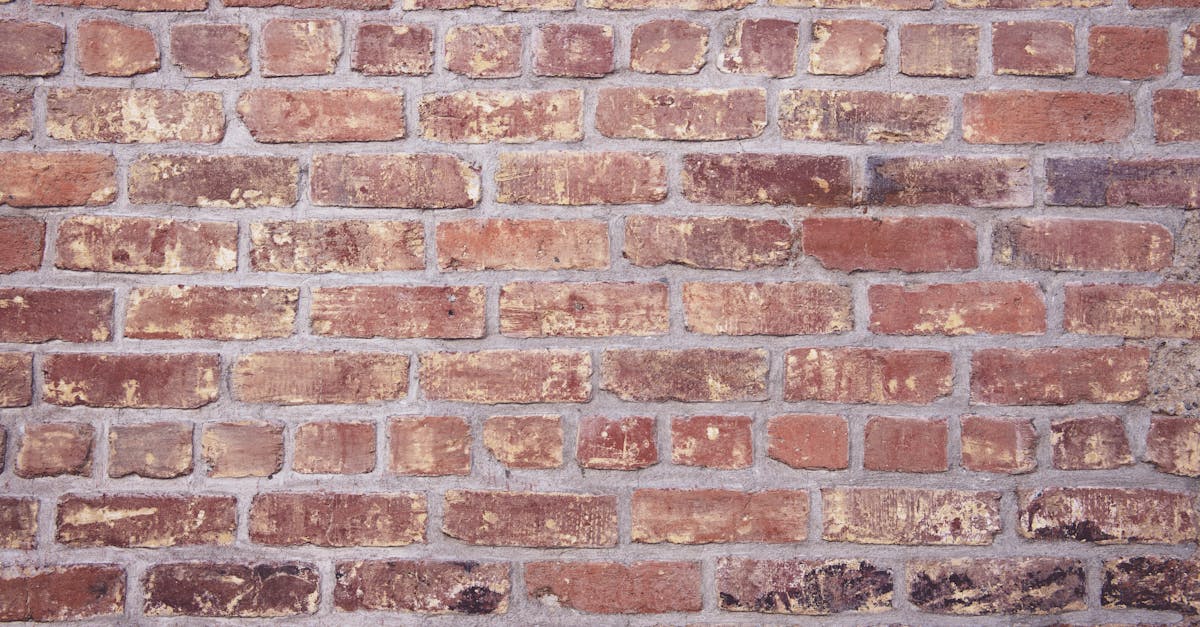
How to Replace Loose or Missing Stones in Cladding
Cleaning the Installation Site
Before undertaking any repairs, ensuring that the installation area is clean is crucial. Begin by removing any loose debris, dust or old adhesive from the surfaces surrounding the stones. A thorough clean not only enhances the aesthetic appeal but also allows for better adhesion when installing the replacement stones. Depending on the extent of dirt accumulation, a wire brush or a soft cloth may be necessary to restore a suitable surface.
Assessing the existing jointing material is also part of this process. If there are remnants of mortar or grout from the previous stones, these should be completely removed to create a smooth and uniform base for the new stones. Water can help in loosening stubborn residues. Once the area is adequately prepped, it will facilitate stronger bonding of the replacement stones, contributing to a long-lasting and visually pleasing outcome.When to Call a Professional for Stone Wall Repairs
Importance of Surface Preparation
nes interact visually and physically with one another. Various finishes, such as polished, honed, or rough, can create different impressions and should align closely with the original materials. When comparing samples, touch and physical characteristics can reveal discrepancies that might not be immediately visible, aiding in the selection of stones that seamlessly integrate into the existing design.
Installing Replacement Stones
Before beginning installation, gather all necessary tools and materials. Ensure the area is clean and free from debris, as this helps achieve a secure bond. If adhesive is used, apply it evenly to the back of the replacement stone. Position the stone carefully using gentle pressure to ensure it sits flush with the surrounding stones. Aligning the stone correctly will create a more uniform appearance and enhance the overall aesthetic of the cladding.
Once the stone is placed, apply additional adhesive around the edges to further secure it in position. For maximum stability, consider using spacers to maintain even gaps between stones, allowing for expansion and contraction. After the adhesive has cured according to the manufacturer’s instructions, check for any necessary adjustments. Proper installation is crucial for longevity and ensuring that the replacement stones blend seamlessly with the existing cladding.
Application Techniques for Stability
When installing replacement stones, achieving proper adhesion is crucial for long-term stability. Begin by applying an appropriate adhesive to both the back of the replacement stone and the substrate. This dual application creates a stronger bond. Ensure the adhesive used is suitable for the specific materials involved, such as natural stone or manufactured stone products. Press the stone firmly into position. A slight twisting motion can help the adhesive spread evenly.
To further secure the stones, consider using mechanical fasteners such as pins or brackets, especially on larger pieces or in high-traffic areas. These fasteners add an extra layer of support, preventing any potential shifting over time. Allow the adhesive to set as per manufacturer instructions before applying any stress to the new stones. Regularly check the alignment and consistency during the installation process to maintain an even and professional finish.
FAQS
How do I determine if a stone in my cladding is loose or missing?
You can check for loose stones by gently tapping them with a tool; if they sound hollow or shift, they're likely loose. For missing stones, simply look for gaps in the cladding where stones should be present.
What materials do I need to replace loose or missing stones in cladding?
You will typically need replacement stones, compatible adhesive or mortar, a trowel, a cleaning brush, and protective gear such as gloves and goggles.
How can I match the colour and texture of replacement stones to the existing cladding?
Compare your existing stones to samples at a hardware store or supplier. It's helpful to take a photo of your cladding to show retailers, and you can also perform a test fit with potential matches.
Is it necessary to clean the installation site before replacing the stones?
Yes, cleaning the site is crucial. Removing any debris, dust, or old adhesive helps ensure a strong bond for the new stones, leading to a more stable and lasting repair.
Can I install replacement stones in wet weather?
It is not advisable to install replacement stones during wet weather, as moisture can affect the adhesive's effectiveness and lead to poor adhesion. Wait for dry conditions for the best results.
Related Links
Identifying Water Damage in Stone Wall CladdingTools and Materials Needed for Stone Wall Repairs
Preventative Measures to Avoid Future Damage to Stone Cladding
When to Call a Professional for Stone Wall Repairs
Best Practices for Long-lasting Repairs on Stone Walls